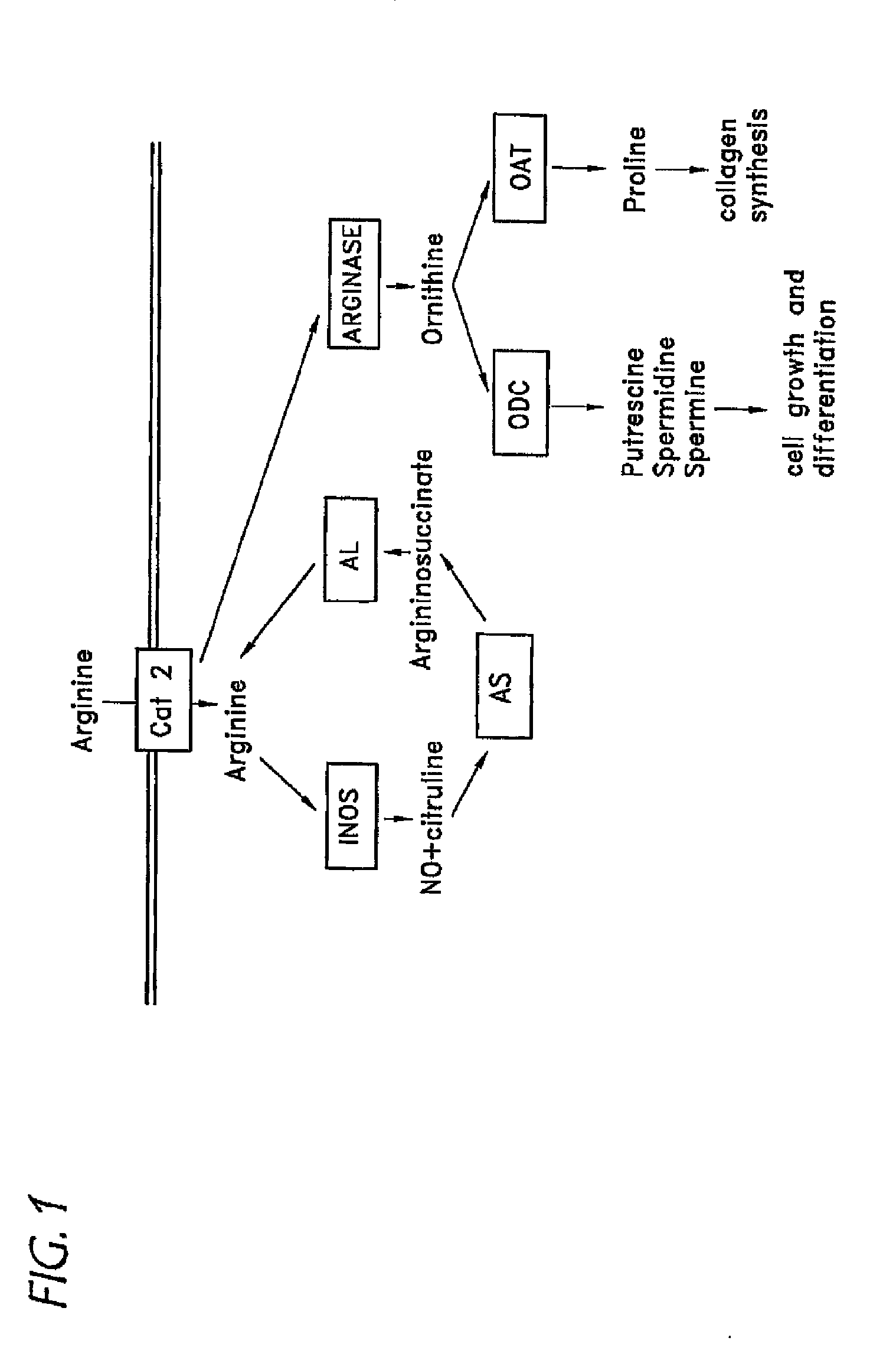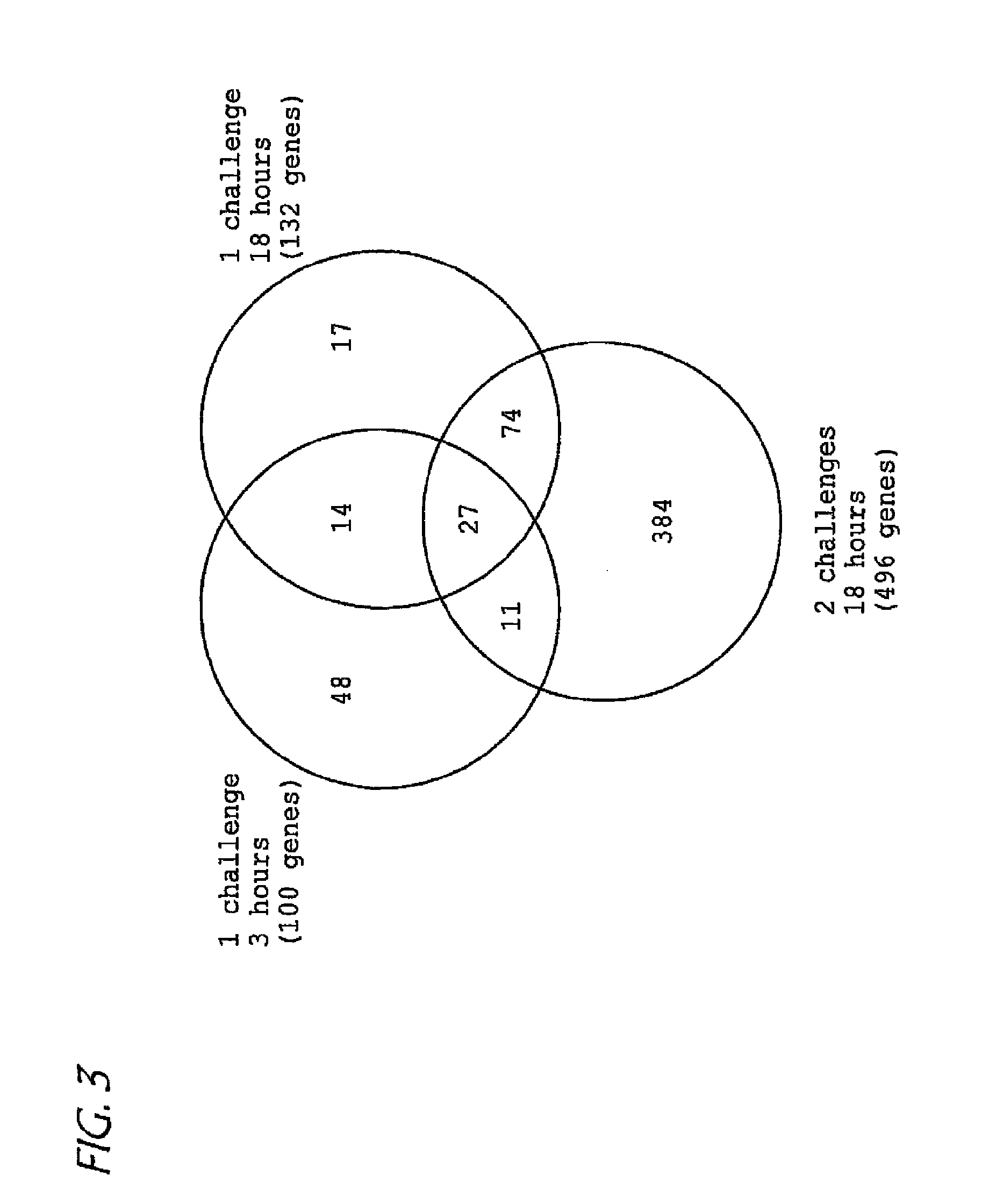Treatment for asthma and allergy
- Summary
- Abstract
- Description
- Claims
- Application Information
AI Technical Summary
Benefits of technology
Problems solved by technology
Method used
Image
Examples
example 1
Experimental Asthma Induction in Mice
[0113] Balb / c mice were obtained from the National Cancer Institute (Frederick, Md.) and housed under pathogen-free conditions. Asthma models were induced by intraperitoneal injection with OVA and 1 mg aluminum hydroxide (alum) on days 0 and 14, followed by intranasal OVA or saline challenge (under conditions which promote delivery of the protein to the lung) on days 24 and 27, Aspergillus fumigatus antigen induced asthma was induced over the course of three weeks by repeated intranasal application of the protein to anesthetized mice as described in Huang, W. W., Garcia-Zepeda, E. A., Sauty, A., Oettgen, H. C., Rothenberg, M. E., and Luster, A. D. 1998. Molecular and biological characterization of the murine leukotriene B4 receptor expressed on eosinophils. J. Exp. Med. 188:1063-1074 and Mishra, A., Weaver, T. E., Beck, D. C., and Rothenberg, M. E. 2001. Interleukin-5-mediated allergic airway inflammation inhibits the human surfactant protein C ...
example 2
Preparation of RNA and Microarray Hybridization
[0114] RNA was extracted using the Trizol reagent as per the manufacturer's instructions. Following Trizol purification, RNA was repurified with phenol-chloroform extraction and ethanol precipitation. Microarray hybridization was performed by the AFFYMETRIX Gene Chip Core facility at Children's Hospital Medical Center. Briefly, RNA quality was first assessed using the Agilent bioanalyzer (Agilent technologies, Palo Alto, Calif.) and only those samples with 28S / 18S ratios between 1.3 and 2 were subsequently used. RNA was converted to cDNA with Superscript choice for cDNA synthesis (Invitrogen, Carlsbad, Calif.) and subsequently converted to biotinylated cRNA with Enzo High Yield RNA Transcript labeling kit (Enzo diagnostics, Farmingdale N.Y.). After hybridization to the murine U74Av2 GeneChip (Affymetrix, Santa Clara, Calif.), the gene chips were automatically washed and stained with streptavidin-phycoerythrin using a fluidics system. T...
example 3
Northern Blot and RT-PCR Analysis
[0115] RNA was extracted from the lungs of wild-type Balb / c mice, IL-4 Clara cell 10 lung transgenic mice (Rankin et al., Proceedings of the National Academy of Sciences of the United States of America, 93:7821-7825 (1996)) containing wild-type or deleted copies of the gene for STAT6 (Shimoda et al., Nature, 380:630-3 (1996)), and from the lungs of mice treated with saline or recombinant murine IL-13, as previously reported (Yang et al., Am J Respir Cell Mol Biol, 25:522-30 (2001); Pope et al., J Allergy Clin Immunol, 108:594-601 (2001)). The cDNA probes, generated by PCR or from commercially available vectors [Image Consortium obtained from American Tissue Culture Collection, Rockville, Md. or Incyte Genomics, Palo Alto, Calif.], were sequence confirmed, radiolabelled with 32P, and hybridized using standard conditions. RT-PCR, using standard procedures with gene specific primers, was performed using lung cDNA as template.
PUM
| Property | Measurement | Unit |
|---|---|---|
| Fraction | aaaaa | aaaaa |
| Fraction | aaaaa | aaaaa |
| Fraction | aaaaa | aaaaa |
Abstract
Description
Claims
Application Information
 Login to View More
Login to View More - R&D
- Intellectual Property
- Life Sciences
- Materials
- Tech Scout
- Unparalleled Data Quality
- Higher Quality Content
- 60% Fewer Hallucinations
Browse by: Latest US Patents, China's latest patents, Technical Efficacy Thesaurus, Application Domain, Technology Topic, Popular Technical Reports.
© 2025 PatSnap. All rights reserved.Legal|Privacy policy|Modern Slavery Act Transparency Statement|Sitemap|About US| Contact US: help@patsnap.com



